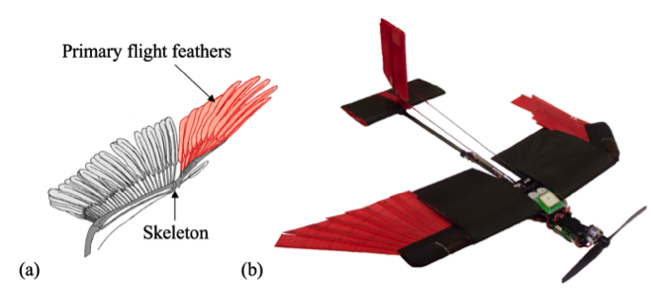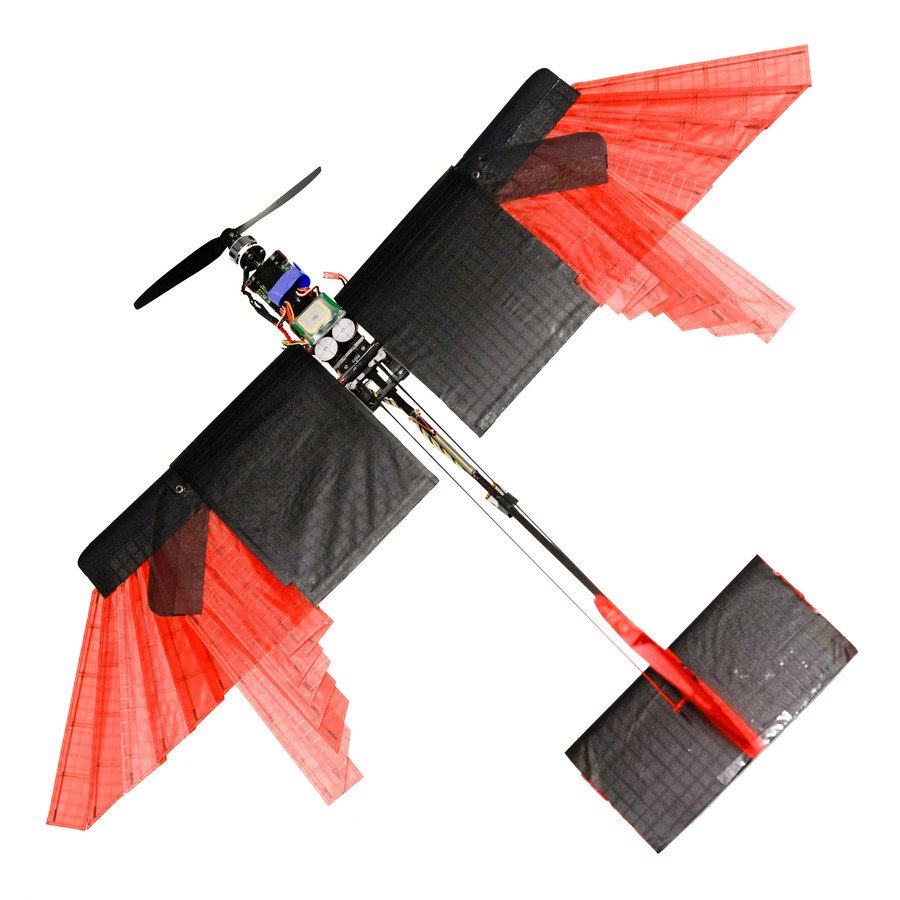Robo-bird: Swiss enthusiasts create feathered drone that mimics birds in flight
Researchers at a Swiss tech university have come up with a bio-inspired device that mimics a bird’s movements during flight to make their drones easier to maneuver and more resistant in high winds. One more step, and here come robo-birds!
“We were inspired by birds: they can radically transform the size and shape of their wings because they have an articulated skeleton that is controlled by muscles and covered in feathers that overlap when the wings are folded,” explained Matteo di Luca, one of the researchers behind the invention.
The drone that the scientists of the Swiss federal technology institute (EPFL) came up with has been equipped with bird-like feathered wings that can spread, fold and overlap, akin to a fan. This way the shape of the drone’s wingspan can be changed during flight, making it better at coping with high speeds, strong winds, and sharp turns.
READ MORE: 1-legged robot springs off barriers parkour-style (VIDEO)
“The moving part is located on the outer wings. It works like a bird’s quill feathers, which are the large feathers at the edge of the wing,” the scientists explained in their statement, which was released by the Lausanne-based institute.

The nature-inspired shape of the wing also allows the drone to move through tight spaces and fly between obstacles.
“When they need to change direction, increase their speed, or counter headwinds, birds alter the configuration of their wings. To steer, for example, they spread one wing and slightly retract the other. By adjusting their wingspan in this way, they create a calculated imbalance that causes them to turn. Up to now, only birds could do this so effectively,” the statement read.
However, mimicking nature is not as easy as it sounds. The inventors faced a number of challenges, including finding a balance between the weight of the wings and their aerodynamic qualities.

“It is extremely difficult to find the right balance between aerodynamic efficiency and the weight of the device,” explained Stefano Mintchev, another researcher. In the end, it was decided to make the wing out of composite materials, which maximized its strength, while keeping it light.
READ MORE: Drone piloting becomes A-level subject in UK schools
Thanks to its ability to adapt to its surroundings, the researchers hope their invention will prove successful flying at low altitudes, where winds change rapidly, and in city landscapes, where there are obstacles that other drones find it difficult to maneuver around. We’ll have to wait and see!














